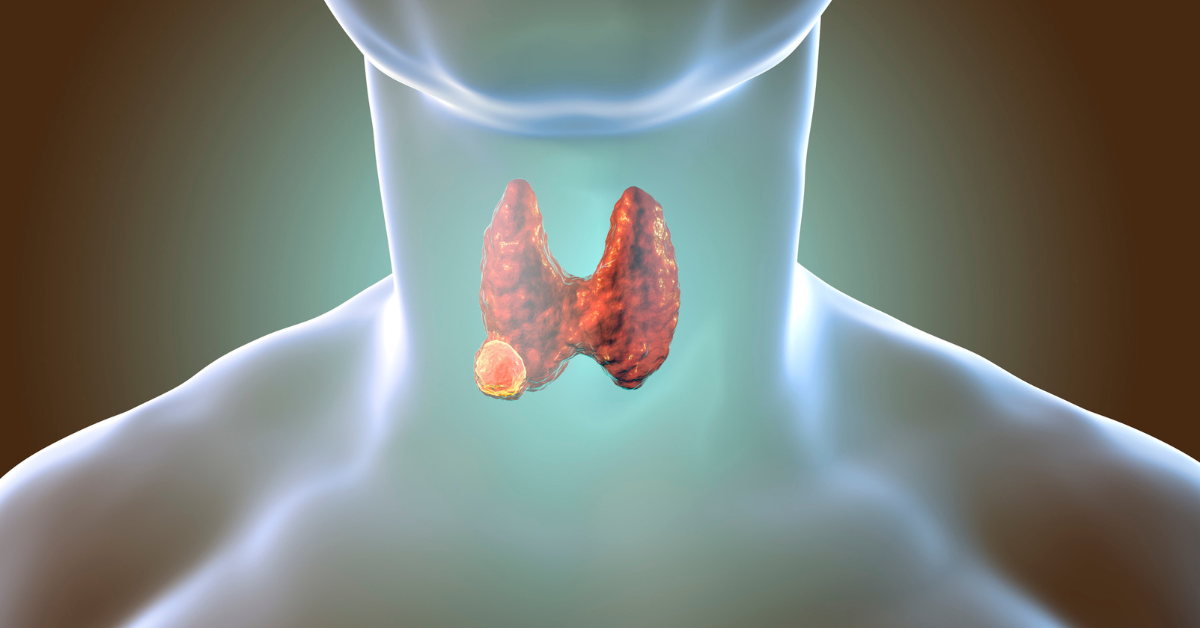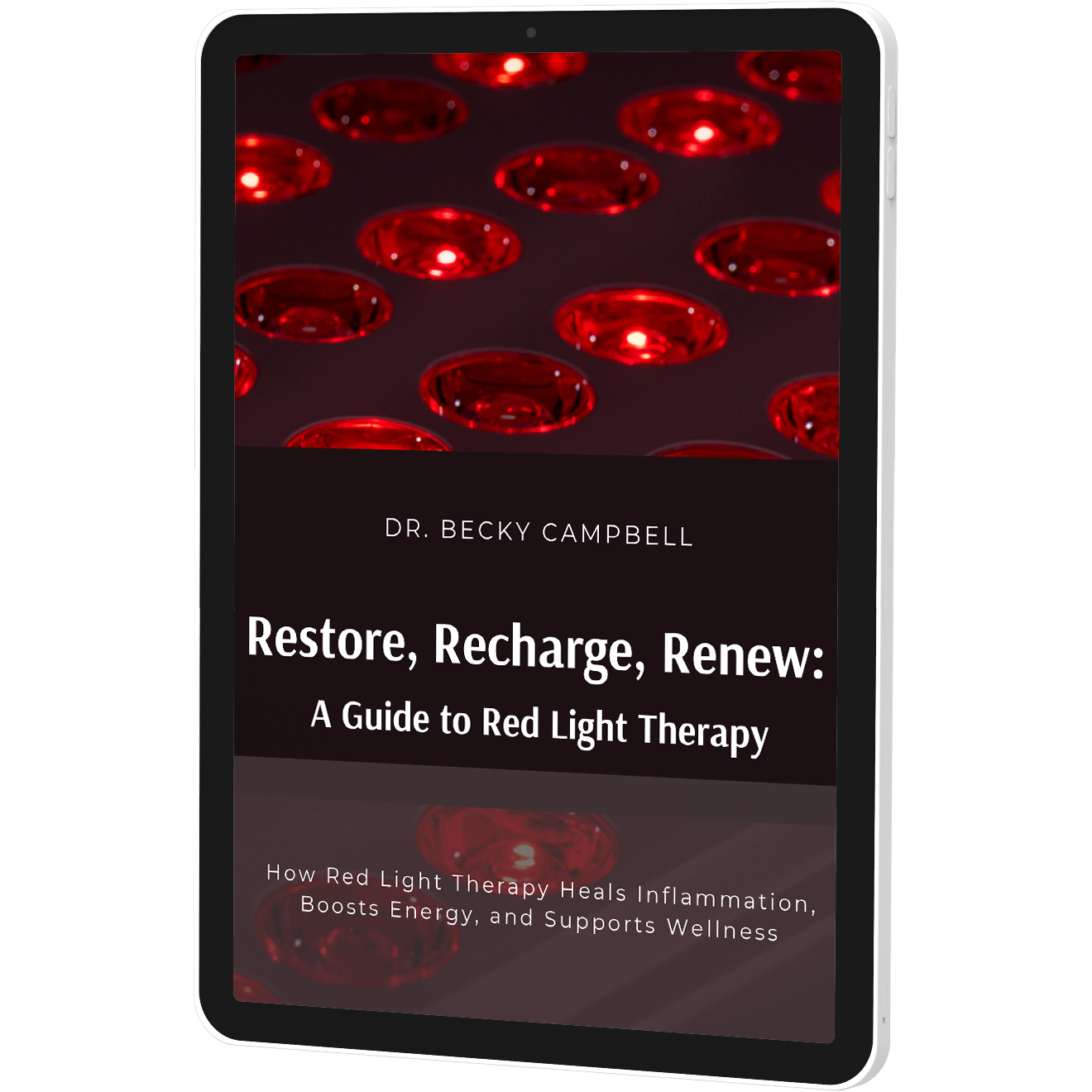Understanding Progesterone’s Role in Perimenopause – and What Happens When It Drops
One day, you’re feeling like yourself – energetic, clear-headed, and in control. The next? You’re waking up at 3 a.m. for no reason, snapping at your family over the smallest things, and wondering why your jeans suddenly feel tight. Your cycle is getting unpredictable, your anxiety is creeping up, and your usual go-to wellness habits just aren’t cutting it anymore. If this sounds familiar, you’re not alone. These are classic signs of perimenopause – the hormonal shift no one warns you about. It often sneaks up in your early 40s, bringing a wave of symptoms that many women chalk up to stress, aging, or just “something feeling off.” But at the root of it all is a sharp decline in estrogen & progesterone, but we are going to focus on progesterone for now.
It is a powerhouse hormone that does far more than support fertility. It plays a critical role in keeping estrogen in check, promoting restful sleep, calming the nervous system, and even regulating inflammation.
When levels start to drop in perimenopause, the effects can be dramatic – think mood swings, insomnia, heavy periods, and even worsening histamine intolerance.
Here, I’ll explore why progesterone matters, what happens when it starts to decline, and most importantly – how to restore balance naturally.
So, whether you’re looking to ease symptoms or better understand your body’s hormonal shifts, you’re in the right place.
What Is Progesterone and Why Does It Matter?
When most people think of progesterone, they associate it with pregnancy and fertility. And while it does play a crucial role in reproduction, its influence extends far beyond that.
Progesterone is a key balancing hormone, working behind the scenes to keep multiple systems in check – from your brain to your immune system.
Here’s why this hormone is essential for overall health:
- Regulating the Menstrual Cycle – Progesterone is the yin to estrogen’s yang. After ovulation, it rises to prepare the body for a potential pregnancy. If conception doesn’t happen, progesterone levels drop, triggering your period. When it’s levels decline in perimenopause, estrogen can become dominant, leading to irregular cycles, heavier bleeding, and worsened PMS symptoms. (1)
- Calming the Nervous System – Often called the “chill hormone,” progesterone has a natural calming effect on the brain. It stimulates GABA, the neurotransmitter responsible for relaxation and deep sleep. (2, 3) When levels drop, you may notice increased anxiety, irritability, and those dreaded 3 a.m. wake-ups.
- Supporting Brain Function – Beyond its role in stress relief, it protects cognitive function. It helps stabilize neurotransmitters like serotonin and dopamine, reducing the risk of mood swings and brain fog. (4)
- Keeping Inflammation in Check – It plays a direct role in immune regulation, helping to control inflammatory responses in the body. This is especially relevant for women with histamine intolerance or mast cell activation syndrome (MCAS), as progesterone can naturally stabilize mast cells and reduce histamine release. (5, 6)
What Happens When Progesterone Drops in Perimenopause?
Throughout a typical menstrual cycle, progesterone follows a distinct pattern: It rises after ovulation and peaks in the luteal phase (the second half of the cycle). As perimenopause sets in, ovulation becomes irregular, and since ovulation is the primary trigger for progesterone production, levels start to decline.
But it’s not just a slow, gentle drop.
It can fluctuate wildly before settling into a steady decline, creating a hormonal roller coaster that leaves many women feeling out of balance.
When progesterone is low, estrogen often dominates, leading to a state known as estrogen dominance – not because estrogen is too high, but because it isn’t there to keep it in check.
This imbalance can contribute to:
- Mood Swings & Anxiety – Without progesterone’s calming effect on the nervous system, anxiety can skyrocket. (7) Many women describe feeling “wired but tired,” with racing thoughts, increased irritability, and a shorter fuse.
- Insomnia & Poor Sleep Quality – Since progesterone promotes GABA activity (your brain’s relaxation neurotransmitter), its decline often results in trouble falling or staying asleep. (8) If you find yourself waking up between 2-4 a.m., low progesterone could be a factor.
- Heavy, Irregular, or Painful Periods – Progesterone’s job is to counterbalance estrogen and keep uterine lining growth in check. When progesterone drops, estrogen can stimulate excessive buildup, leading to heavier, more painful, or unpredictable periods. (9)
- Increased Inflammation & Histamine Sensitivity – It naturally stabilizes mast cells, helping to regulate histamine release. When levels drop, inflammation can increase, and histamine intolerance symptoms – such as headaches, skin flushing, sinus congestion, and digestive issues – can worsen.
- Brain Fog & Memory Issues – Many women in perimenopause experience forgetfulness and mental cloudiness. This isn’t just “getting older” – progesterone plays a role in protecting brain function and supporting neurotransmitter balance.
- Breast Tenderness & Water Retention – Higher estrogen relative to progesterone can lead to fluid retention, bloating, and sore, swollen breasts – especially in the second half of the cycle.
- Worsening PMS & PMDD – If you’ve always struggled with PMS or premenstrual dysphoric disorder (PMDD), progesterone’s decline can make symptoms even more intense. Mood swings, irritability, and fatigue may feel amplified.
Why Addressing Progesterone Decline Matters
It isn’t just about managing symptoms – it’s about long-term health.
When levels drop, it can set off a chain reaction that impacts multiple systems in the body. Chronic progesterone deficiency can contribute to:
-
- Higher cortisol levels, keeping the body stuck in fight-or-flight mode
- Increased risk of osteoporosis, since progesterone supports bone formation
- More systemic inflammation, which affects gut health, immune function, and cardiovascular health
- Poor histamine clearance, as progesterone helps regulate mast cells and supports the DAO enzyme that breaks down histamine – meaning lower levels can trigger more histamine-related reactions.
How to Support Healthy Progesterone Levels Naturally
While declining progesterone is a natural part of perimenopause, that doesn’t mean you have to suffer through the symptoms.
The right lifestyle, nutrition, and supplement strategies can help support your body’s ability to produce and balance progesterone – naturally.
1. Prioritize Stress Management
Chronic stress is one of the biggest progesterone disruptors. That’s because your body steals progesterone to make cortisol (your stress hormone). Over time, this can leave you in a state of constant progesterone depletion.
Ways to lower stress and support progesterone:
- Daily mindfulness or meditation – Even five minutes of deep breathing can reduce cortisol.
- Gentle movement – Yoga, walking, and strength training help manage stress without overtaxing the body.
- Nervous system regulation – Practices like vagus nerve exercises, acupuncture, or EFT tapping can help calm the stress response.
2. Eat to Support Progesterone Production
Your body needs specific nutrients to make and metabolize hormones properly. A diet rich in whole foods can help maintain hormonal balance.
Key progesterone-supporting nutrients:
- Magnesium – Helps lower cortisol and supports progesterone synthesis. Found in leafy greens, pumpkin seeds, dark chocolate, and nuts.
- Vitamin B6 – A crucial cofactor in it’s production. Get it from wild-caught salmon, poultry, bananas, and chickpeas.
- Zinc – Supports ovarian function and progesterone release. Found in oysters, beef, pumpkin seeds, and cashews.
- Healthy fats – Cholesterol is the building block of progesterone. Prioritize avocado, olive oil, coconut oil, and wild-caught fish.
Foods to limit: Processed foods, sugar, alcohol, and inflammatory seed oils (canola, soybean, etc.) can contribute to hormonal imbalance.
3. Support Ovulation (Even If You’re in Perimenopause)
Ovulation is key for progesterone production. While it becomes more irregular in perimenopause, certain habits can help encourage regular ovulation for as long as possible.
- Avoid over-exercising – Excessive high-intensity workouts can deplete this hormone.
- Balance blood sugar – Insulin resistance can disrupt ovulation. Focus on protein, fiber, and healthy fats with meals.
- Get enough sleep – Aim for 7-9 hours of high-quality sleep, as poor sleep can throw off hormone production.
4. Use Herbal & Nutritional Supplements
Certain herbs and nutrients have been shown to support progesterone levels naturally:
- Vitex (Chaste Tree Berry) – Helps promote ovulation and increase progesterone levels over time.
- Myo-Inositol – Supports ovarian function and progesterone production, especially in those with insulin resistance.
- Magnesium L-Threonate – This highly absorbable form of magnesium crosses the blood-brain barrier, making it particularly beneficial for reducing stress, improving sleep, and supporting cognitive function during perimenopause.
- B6 + Zinc – B6 is important for progesterone synthesis and neurotransmitter balance, while zinc supports ovarian function and hormone regulation.
5. Consider Bioidentical Progesterone (If Needed)
For some women, lifestyle and nutritional strategies may not be enough to restore progesterone balance. This is where bioidentical hormone replacement therapy (BHRT) can be an option.
Unlike synthetic hormones, bioidentical progesterone is structurally identical to what your body naturally produces, making it a gentler and more effective choice for symptom relief. It can help with sleep, anxiety, mood stability, and even histamine-related issues by supporting mast cells and promoting a more balanced inflammatory response.
The Connection Between Progesterone, Histamine Intolerance, and MCAS
I’ve already touched on this, but it’s worth calling out directly – if you’re dealing with histamine intolerance or mast cell activation syndrome (MCAS), perimenopause can feel like a perfect storm.
It naturally stabilizes mast cells and helps keep histamine levels in check.
But when levels drop? Hello, headaches, flushing, anxiety, and sleep struggles.
If your histamine symptoms have ramped up in perimenopause, it’s not in your head—it’s in your hormones.
Supporting progesterone naturally may help bring things back into balance and take the edge off those frustrating reactions.
How Mold Exposure Disrupts Progesterone and Perimenopause
Mold exposure is another one of those sneaky things that can throw your entire system off – including your hormones. Mycotoxins from mold act as endocrine disruptors, suppressing progesterone and worsening perimenopausal symptoms.
If you’ve been exposed to mold, you might notice heavier periods, more intense anxiety, brain fog, or worsening histamine issues – all classic signs of low progesterone.
If this sounds familiar, addressing mold exposure is just as important as supporting your hormones.
Detox strategies, binders, and environmental cleanup can go a long way in helping your body rebalance.
Rebalancing Progesterone for a Smoother Perimenopause
It is more than just a fertility hormone – it’s essential for keeping your entire system balanced. As levels drop in perimenopause, the ripple effects can be overwhelming, from disrupted sleep and mood swings to increased histamine reactions and worsened inflammation. But the good news?
You’re not powerless in this process.
Focusing on key lifestyle strategies, targeted nutrition, and smart supplementation can help you support healthy progesterone levels and make this transition much smoother.
And if you suspect deeper imbalances – whether from mold exposure, histamine intolerance, or other underlying issues – getting the right guidance can make all the difference.
A consult is the first step toward lasting wellness. we’ll explore your unique needs and get you on the path to reclaiming your health.
Let’s take that next step together – you deserve it!
Resources.
- https://pubmed.ncbi.nlm.nih.gov/11392026/
- https://pubmed.ncbi.nlm.nih.gov/16574382/
- https://pubmed.ncbi.nlm.nih.gov/17579609/
- https://pubmed.ncbi.nlm.nih.gov/32722286/
- https://pubmed.ncbi.nlm.nih.gov/36933040/
- https://pubmed.ncbi.nlm.nih.gov/17166400/
- https://pubmed.ncbi.nlm.nih.gov/32723604/
- https://pubmed.ncbi.nlm.nih.gov/21289261/
- https://pmc.ncbi.nlm.nih.gov/articles/PMC5585876/










